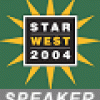Analysis
Articles
 |
Meaningful Connections In this week's column, Danny R. Faught discusses some techniques on how to beef up your networking game. He compares successful to not-so-great tactics for meeting people who can help us. He also guides us in the ways of maintaining relationships. His bottom line: the focus should always be on creating meaningful connections. Networking shouldn't just be about meeting people, but about learning how to wisely judge their value as well. |
|
|
Design and Code Inspection Metrics In this study, historical inspection data from large real-time embedded systems were analyzed with the intention of improving the current review process. |
||
|
The Future of Code Coverage Tools Modern optimizing compilers are becoming increasingly dependent on dynamic profile information. Because the profile information collected by these compilers also is sufficient for QA, it is likely that code-coverage analysis will become an integrated development environment option. This integration should help to simplify your code development and testing processes and should also improve the accuracy of your coverage information and the performance of your optimized code. |
||
|
Maximizing the Effectiveness of a Subject Matter Expert Subject matter expertise is essential on software projects. But a subject matter expert's role and expected contributions are often nebulous concepts. Even the process of selecting a subject matter expert is often misunderstood. This article provides a subject matter expert definition and offers a few guidelines and pointers to help QA managers maximize the benefits of working with a SME. |
Jose Fajardo
February 24, 2004 |
|
|
Inspection Checklist for Training Materials (template) This is an inspection checklist that used to inspect training courses prior to the initial pilot. |
Steve Allott
July 10, 2002 |
|
|
Do Your Inspections Work? Software inspections are meant to uncover defects and save considerable project effort and cost. But how do you know if your inspections are cost-effective compared to testing and other quality activities? Can you even tell if inspections pay for themselves? In this week's column, Karl Wiegers outlines three ways to measure your inspection efforts. |
Karl E. Wiegers
June 19, 2002 |
|
|
A Selection of "Our Take" Columns "Our Take" is a regular column from the editors at Software Quality Engineering. It appears in the twice-monthly StickyLetter since its inception in September 2000 (originally "STQe-Letter"). From jazz music, to car troubles, to the Lewis and Clark expedition, Robert Rose-Coutré, former StickyMinds.com Editor, will use anything to make a point about building better software. The editors at Software Quality Engineering have compiled a collection of some of these pieces. Musings from StickyLetter's "Our Take" are presented here. |
||
 |
Calculating the Economics of Software Inspections Without return on investment (ROI) calculations for the software inspections process, you cannot know the true benefit of those inspections. In this article, Ed Weller makes some assumptions about the cost of inspections and tries to estimate the savings from reduced test cost. He also provides a spreadsheet for doing "what-if" analysis of different savings based on inspection effectiveness, and how much defect removal in test might cost. |
|
|
Don't Forget the Losses Starting a new way of doing things implies ending the old. People may accept that as obvious, but they often forget that endings bring with them losses. Using an example about adopting software inspections, Lee Copeland urges organizations to acknowledge the losses people experience when they leave the familiar behind. |
||
|
When Reviewers Can't Meet When your team members are separated by space or time, don’t abandon peer reviews. They can still be powerful contributors to product quality and team productivity. In this adaptation from his forthcoming book, Karl Wiegers spells out how to engage the team in distributed review meetings or asynchronous reviews. Although they aren’t the same as sitting down face-to-face, these techniques provide a valuable alternative mechanism for getting a little help from your friends. |
Karl E. Wiegers
August 23, 2001 |








